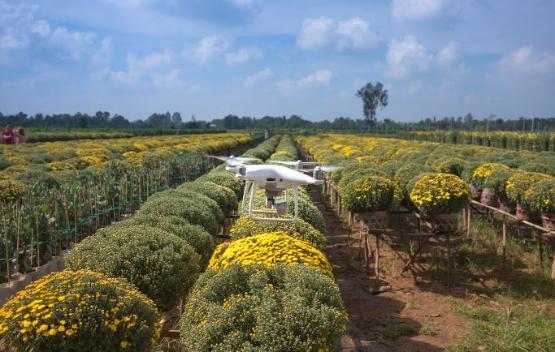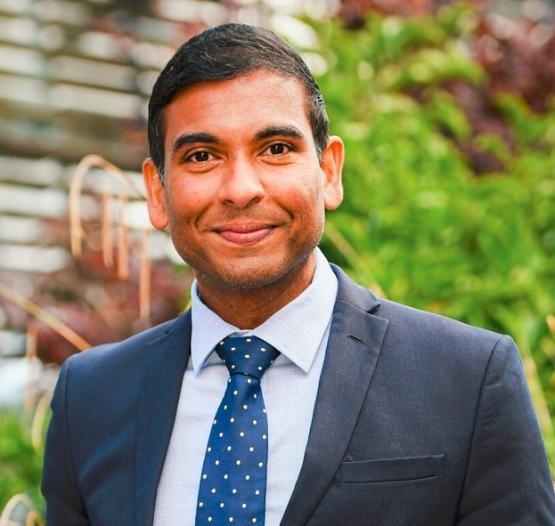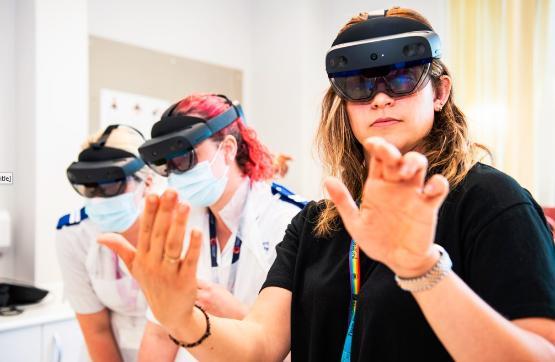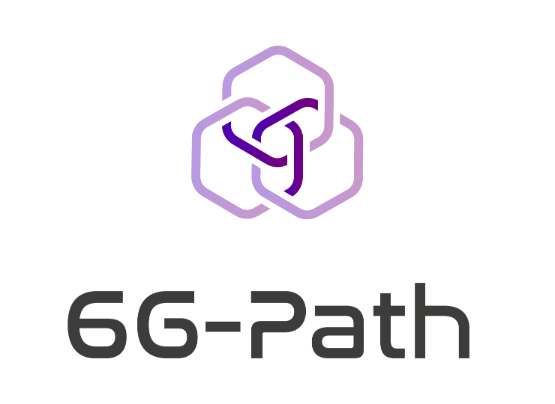6G roll-out role for University of Bradford

Imagine the world of the future, with farms and vineyards monitored by drones, classrooms populated by holograms and personalised wound-healing patches printed off by nurses.
Continuous demands for higher throughput, lower latency and more energy efficient communications needs to be supported by relevant use cases that can claim and demonstrate the needs for these requests.
Professor Sankar Sivarajah, Dean of the University’s School of Management, said: “Our role is in evaluation and impact of those use cases. We will analyse the data gathered from some of the test pilots in the project to show how they are working.”

Deployment of 5G (fifth generation) worldwide has brought more efficient and improved wireless communications, and now there is demand from technology and industry providers to go even further.
The initial meeting of the 6G-PATH’s (Pilots and TriaAls THroughout Europe) launched in Greece on January 30. It will test use cases to investigate the feasibility impact of a 6G (sixth generation) rollout, funded by Horizon Europe, the EU’s key funding programme for research and innovation.
6G-PATH is a consortium of 26 partners from 13 countries, including five partners from industry, eight academic and/or research organisations, one Non-Governmental Organisation (NGO) and 12 Small-to-Medium Enterprises (SMEs). Industry partners include global giants Orange, Telefonica and Airbus.
The University of Bradford - led by Professors Sankar Sivarajah, Vishanth Weerakkody and Deputy Vice-Chancellor Zahir Irani - will receive €347,500 (£299,033) to measure the relevant Key Performance Indicators (KPIs) and the development of Key Value Indicators (KVIs) - looking at social value and how 6G could improve people’s lives - across four key strands:
-
Health
-
Education
-
Smart Cities
-
Smart Farming

Professor Sivarajah, pictured above, said: “The University of Bradford research team (UBRAD) has several years of research and development experience, both in academia and industry. It consists of people who are acknowledged as the most published UK academics in the field of technology management, evaluation and digital government research.
“The UBRAD academics will use their extensive experience and expertise in evaluating technology implementation, diffusion and adoption in Europe to lead the societal and business impact of the trials and pilots.
“With this project, there will be quantifiable technical indicators, for example measuring when and how often the network drops, along with energy efficiency. But we will also be looking at the socio-economic costs, savings and efficiencies and the social impact. What will be the impact of 6G on people’s lives? Will people benefit?”
Data will be sent to Bradford by partners from the test pilots, but the UBRAD team will also collect data from field visits, focus groups and workshops. Some of the funding Bradford receives will support PhD studentships.
Examples of test cases to be analysed by the University of Bradford include:
Health
-
Personalised wound healing, such as 3D printed patches impregnated with the right medicines to heal the individual’s wound. This use case will be conducted at the Berlin University of Medicine.
-
Elderly monitoring, through wearable devices such as smart watches and virtual reality that can detect if a person falls or suffers pain which would be able to communicate with a doctor. This would allow for AI to recognise the daily pattern of life of an individual, meaning care can be personalised.

Smart cities
-
AGVs - automated guided vehicles, to be controlled by a human user for use in factory operations, automatic warehouses and manufacturing.
-
Security coordination for improved coordination of police and emergency services resources and activities through tools such as secure communications, geolocation, body-worn cameras and real-time crime mapping information.
-
Connected and sensing city through improving media content distribution and providing an increased awareness of traffic and mobility for better road safety and user mobility.
Farming
-
Water saving. Data from monitoring an avocado fruit orchard in Algarrobo Costa Malaga, Spain. to allow efficient crop management, for example in monitoring their water demands and using sensors in the soil.
-
Smart vineyards to continually monitor the grapes and allow for automated deployment of drones and/or robots for interventions where and when necessary.
Education
-
Extended Reality, XR (includes augmented reality, AR, virtual reality, VR and mixed reality, MR) rural schools.
-
Holographic-based education
-
Extended Reality Health Training e.g. creating virtual emergency scenes using XR technology to train healthcare professionals
-
-
Classroom of the future
-
Use cases: Two rural schools in Romania. The aim is to improve pupil’s learning performance by achieving a high degree of digitalisation through the use of digital content and alternate teaching methods such as XR-enabled technology (an umbrella term encapsulating Augmented Reality, Virtual Reality, Mixed Reality). In Romania, 45 per cent of children come from rural areas and almost 30 per cent are unable to get a passing grade at the National Evaluation, which prevents them from accessing high school and university education. The aim is to create “captivating and interactive” learning experiences.
-
About 6G-PATH Goal
6G-PATH goal is to help foster the further development and integration of new and improved tools and products from EU companies with 5G/6G, while also measuring relevant key performance indicators (KPIs) and key value items (KVIs). To achieve this,
- 7 testbeds will be part of the project consortium, which will be used by 10 use cases spread across 4 key verticals: Health, Education, Smart Cities and Farming.
- A portion of the budget will be used for Financial Support for Third Parties (FSTP), where there is vision for the integration of 2 new Pilot Sites, extension of the testbeds with 10 additional technologies, as well as 30 new use cases, through Open Calls, to further involve the community and obtain more metrics and outcomes. Objectives A total of 7 specific objectives have been set for the project:
1. Setup the 6G-PATH experiment and validation infrastructure and evolve it into B5G/6G experimental infrastructures and pre-normative testbeds.
2. Deliver and refine a transversal integration and experimentation platform.
3. Expand user community and implement large scale field trials with internal and external experiments, through Open Calls.
4. Collect and refine of requirements stemming from Stream B and verticals.
5. Devise leading-edge business models towards the commercialisation and exploitation of 6G-PATH use cases and technologies.
6. Disseminate and communicate results to a wide community of stakeholders while ensuring impact on standardisation efforts.
7. Create repositories for both open knowledge transfer and supporting the subsequent phases of the Smart Networks and Services (SNS) programme.

6G-PATH project has received funding from the Smart Networks and Services Joint Undertaking (SNS JU) under the European Union’s Horizon Europe research and innovation programme under Grant Agreement No. 101139172.

